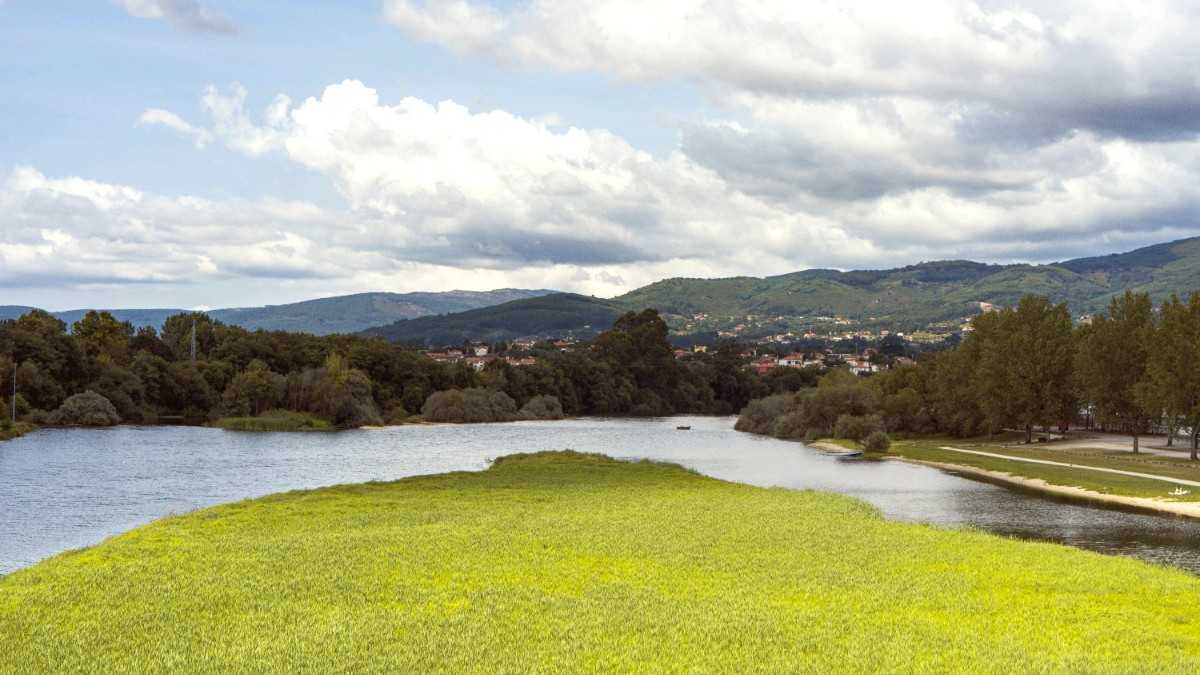
The North, Portugal
Viana do Castelo's most recognizable sites are both historically significant and visually impressive.
These landmarks are easily accessible and provide a foundational understanding of the city's character and history.
These attractions offer a blend of history, culture, and scenic beauty.
A 16th-century fortress at the mouth of the Lima River, built to defend the city and port.
A small, beautiful chapel near the main square, known for its intricate Baroque facade and striking azulejos (tiles).
The main parish church, featuring a Gothic facade and a mix of architectural styles inside.
The labyrinthine historic core with narrow streets, traditional houses, and charming squares.
An Iron Age fortified settlement located near the Santuário de Santa Luzia, offering archaeological ruins.
Viana do Castelo offers beautiful beaches and serene natural landscapes for relaxation and exploration.
A popular beach on the south bank of the Lima River, known for extensive sands, dunes, and excellent conditions for surfing, windsurfing, and kitesurfing.
Another vast sandy beach north of the city, known for its therapeutic iron-rich sands. It offers a quieter experience.
The point where the Lima River meets the Atlantic, an important area for birdwatching and scenic walks, especially at low tide.
Beyond the basilica, the mountain offers walking trails and picnic areas within a forested setting for a peaceful escape and different viewpoints.
A coastal cycling and walking path stretching north and south, offering stunning ocean views and connection to less-visited beaches and villages.
The wider area around the Lima River presents numerous marked trails through vineyards, forests, and rural villages.
Enjoy breathtaking panoramic views from Monte de Santa Luzia, extending over the city, river, and Atlantic coastline.
Praia do Cabedelo offers ideal conditions for surfing and kitesurfing, while Praia da Amorosa provides a quieter beach experience.
The Lima River Estuary is a significant spot for birdwatching and peaceful walks, especially during low tide.
Discover lesser-known spots that provide unique insights into Viana do Castelo's local charm.
The city's compact historic center is easily explored on foot, but attractions outside the core might require a funicular, ferry, or car.
Shoulder seasons (spring and early autumn) offer pleasant weather and fewer crowds. Summer is , especially during festivals, but expect higher prices and more visitors.
The city center is walkable. For Monte de Santa Luzia, use the funicular. To Cabedelo Beach, a seasonal ferry or car is needed. Local buses cover wider areas.
For guided tours and attraction tickets, booking in advance, especially during peak season, ensures availability and saves time.
Wear comfortable shoes for walking the cobbled streets. Carry water, especially when climbing Monte de Santa Luzia. Consider a light jacket for coastal evenings.
Dive into Viana's hidden corners and local life.
Visit Citânia de Santa Luzia, an Iron Age fortified settlement with archaeological ruins near the basilica, offering insights into pre-Roman culture.
Explore the Ecovia Litoral, a scenic coastal path for cycling or walking, stretching north and south of the city, away from main tourist crowds.
Visit the Centro Interpretativo do Caminho Português da Costa for insights into the Coastal Portuguese Way of St. James and the pilgrim experience.
The riverside gardens and promenade offer a peaceful escape. Enjoy views of the Lima River and the Eiffel Bridge.
For deep dives into local history, consider visiting municipal libraries or archives, which might have public access to historical documents.
Beyond the main church, numerous smaller chapels and churches are scattered throughout the city, each with unique art and history.
Wander the historic center's side streets for small shops selling traditional Viana crafts, including filigree jewelry and embroidery.
Besides Santa Luzia, other elevated spots around the city offer different perspectives and photo opportunities.
Many museums close on Mondays and public holidays. It is always best to check their official websites or contact them directly for the most current opening hours and ticket prices.
The Castelo de Santiago da Barra provides a tangible link to Viana's strategic maritime past. The Capela das Almas offers an exquisite example of local Baroque artistry.
Often regarded as one of Portugal's most beautiful squares, it is the social and historical heart of Viana do Castelo.
Spend time here to soak in the ambiance and observe daily life amidst centuries of architecture.
Integrate diverse attractions into your itinerary for a full experience of Viana do Castelo.
Immerse yourself in Viana's rich cultural heritage by visiting its specialized museums and historical religious sites, revealing layers of its past.
Balance your historical explorations with Viana's beautiful natural settings, from extensive beaches to tranquil river estuaries and forested mountain trails.
Explore the 16th-century Castelo de Santiago da Barra for insights into Viana’s defensive history. Visit the Gil Eannes Hospital Ship to understand Portugal's maritime past.
Both sites offer a tangible connection to Viana's rich history.
Admire the Gustave Eiffel-designed Ponte Eiffel, a feat of engineering spanning the Lima River, and the charming Praça da República, often called one of Portugal's most beautiful squares.
These structures highlight Viana's artistic and engineering heritage.
Ascend Monte de Santa Luzia to the Santuário for breathtaking panoramic views of Viana do Castelo, the Lima River, and the Atlantic coast.
The views from Santa Luzia are a highlight of any visit.
Plan your day around specific themes, like maritime history (Gil Eannes, Castelo), art and culture (Museums), or natural beauty (Beaches, Santa Luzia).
Combine Santa Luzia with the Citânia and coastal path for a day of varied sights and activities.
Consider a local guide for insights into the city's history and lesser-known stories behind the attractions.